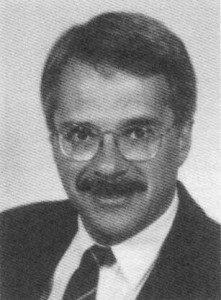Phaistos Disc
Woudhuizen, Fred
Fred Woudhuizen (1959-2021) is an independent researcher who studies ancient Mediterranean languages and scripts, particularly Luwian and Cretan.
>Another Dutch linguist Jan Best and Woudhuizen co-authored a paper(e) on the Phaistos Disc and concluded that “Not only the script but the language, too, is very similar to Luwian.” If their reading is correct, “the text on the disc intends to settle an ownership dispute in a place called Rhytion near Pyrgos in the southwest of the plain of Messara: The Greek king Nestor has a principality in Crete that includes Knossos and parts of the plain of Lasithi and of the Messara.“<
He has also collaborated with Eberhard Zangger in identifying the Sea Peoples as originating in Western Turkey although Woudhuizen also includes some Central  Mediterranean inhabitants among its membership(a).
Mediterranean inhabitants among its membership(a).
He has published many papers on the academia.edu website(b) including one entitled Atlantis in Space and Time(c), in which he claims to have found a reference to Atlantis (ta-ru-nu) in some Cretan hieroglyphics. Jason Colavito was not impressed by Woudhuizen’s convoluted argument(d).
(b) https://independent.academia.edu/FredWoudhuizen
(c) https://www.academia.edu/7960927/Defining_Atlantis_in_Space_and_Time
(d) https://www.jasoncolavito.com/blog/did-the-minoans-record-the-name-of-atlantis-in-cretan-hieroglyphs
Corsini, Marco Guido
 Marco Guido Corsini (1954- ) is an Italian researcher who has produced yet another interpretation of the Phaistos Disk(a) as well as a number of online papers(b) (all in Italian) regarding the search for Atlantis. He identifies the Atlanteans(d) as the ‘Nordic’ Sea Peoples, a la Spanuth, and yet in another place he refers to Rome as the capital of Atlantis, which is interesting as Plato described the Atlantean domain extending as far a Tyrhennia(c), whose territory began just north of what was later known as Rome.
Marco Guido Corsini (1954- ) is an Italian researcher who has produced yet another interpretation of the Phaistos Disk(a) as well as a number of online papers(b) (all in Italian) regarding the search for Atlantis. He identifies the Atlanteans(d) as the ‘Nordic’ Sea Peoples, a la Spanuth, and yet in another place he refers to Rome as the capital of Atlantis, which is interesting as Plato described the Atlantean domain extending as far a Tyrhennia(c), whose territory began just north of what was later known as Rome.
Corsini’s websites are in Italian only and when translated by Google they are not the easiest to read. Unfortunately, Italians seem to rarely use paragraphs and Corsini has a rambling style, making lots of assertions, but offering little evidence to support them.
Corsini ventures into strange territory when he claims that the now ‘missing’ Tulli Papyrus(e) describes a UFO sighting by ancient Egyptians(f) and also that he would like to find the Loch Ness Monster(g)!
A further insight into Corsini’s personality was provided in a recent email that he sent to me, which I include here in its entirety:
“ You are a stupid man. Do not know italian and misinterpret my works. Finish to mention me and my works. You are stupid.”
My only comment is that I would prefer to be stupid than boorish.
(a) https://digilander.libero.it/marcoguidocorsini/rada.htm
(b) https://digilander.libero.it/mgcorsini/index.htm
(c) Timaeus 25b & Critias 114c
(d) https://digilander.libero.it/mgcorsini/atlantide.htm
(e) https://www.catchpenny.org/tulli.html
(f) https://digilander.libero.it/marcoguidocorsini/tulli.htm
(g) https://digilander.libero.it/marcoguidocorsini/nessie2.htm
Linear A
Linear A (1800-1450 BC) is the designation given to one of two scripts used by the Minoans. Although Linear B, which has been deciphered, is similar to Linear A, there have been many failed attempts to decipher it, variously linking it to the Greek, Etruscan, Tyrhennian, Anatolian or Persian(d) languages. The most exotic suggestion that I have encountered is that Linear A is related to Japanese(l).
However, there is some evidence that a writing system was in use in Greece as far back as the sixth millennium BC, which was not adopted from the Phoenicians(h).
Patrick Archer moved further east for a solution, claiming that Linear A is possibly related to Chinese pictographs! Gretchen Leonhardt(m) also sought a solution in the East, offering a proto-Japanese origin for the script, a theory refuted by Yurii Mosenkis(j), who promotes Minoan Linear A as proto-Greek. Mosenkis has published a number of papers on the Academia.edu relating to Linear A(k)(q).
Another of the many exotic solutions was offered by the American, Stuart Harris, who identified the language as being related to Finnish(a)(f)(g). Harris also quotes the controversial Oera Linda Book as evidence that the Cretans spoke Finnish (e). He follows Felice Vinci in identifying the Baltic as the source of much of Greek culture including Homer’s epics(b), in which connection they both locate Troy in Finland.
So far, no single translation theory has gained general acceptance.
Nevertheless, I have always been surprised that the British who managed to unravel the workings of the German Enigma Machine during World War II have failed to decipher Linear A, even though today’s supercomputers are so far ahead of what Alan Turing had to work with, Linear A remains undecoded!
In 2018, Brent Davis, one of the leading experts on Bronze Age Aegean scripts and languages published a paper in which “based on a close statistical analysis, shows that the while both the Phaistos Disc and Linear A are undeciphered writing systems, he can demonstrate that the both are, with a high degree of certainty, encode the same language!”(i)
Material quantity was another advantage that Michael Ventris had in deciphering Linear B. There were 20,000 examples of Linear B signs occurring in inscriptions, compared to just 7,000 examples of Linear A signs, which Davis notes “is about three-to-four A4 pages worth. Mathematicians tell us that if we are to crack Linear A, we’ll need something like 10,000 to 12,000 examples of signs, which means we aren’t that far away, – but it all depends on archaeology. Discoveries are still being made, so I’m optimistic, but what we really need to find is a palace archive, which is where we are likely to find enough Linear A to finally decipher it.”(p)
In an article by Ashley Cowie, he highlighted the work of Professor Silvia Ferrara of Rome’s Sapienza University and her recent decipherment of Linear A numerical fractions using new computational models along with traditional methods(n).
In 2021 Dr Ester Salgarella published her latest investigations into the genetic relationship between Linear A and Linear B, which should assist with the eventual decipherment of the former.(o)
In 2022, Mark Cook, a forensic accountant, took a fresh look at Linear A and concluded “The Linear A Tablets are partially complete accounting records so an accountant reviewing them makes sense”. His approach to deciphering Linear A is revealed in his book Rewriting History: The decipherment of Linear A [2075]. A review by Zeta Xekalaki is available(r).>Cook has now produced three YouTube videos in support of his method of decipherment(s)(t)(u).<
(a) https://www.migration-diffusion.info/article.php?subject=linguistics&id=281
(b) https://www.migration-diffusion.info/article.php?subject=linguistics&id=301
(c) https://patrickofatlantis.com/
(d) Sinking Atlantis | Full Episode | Secrets of the Dead | PBS (archive.org)
(e) https://www.migration-diffusion.info/article.php?year=2011&id=279
(f) https://www.migration-diffusion.info/article.php?year=2011&id=282
(g) https://www.migration-diffusion.info/article.php?year=2011&id=283
(k) https://www.academia.edu/31443689/Researchers_of_Greek_Linear_A
(l) https://atlantipedia.ie/samples/archive-3930-2/
(m) https://konosos.net/2011/12/12/similarities-between-the-minoan-and-the-japanese-cultures/
(n) https://www.ancient-origins.net/news-history-archaeology/linear-script-0014236
(o) http://www.sci-news.com/archaeology/minoan-linear-a-script-09329.html
(p) https://brewminate.com/minoan-linear-a-how-do-you-crack-the-code-to-a-lost-ancient-script/
(q) (99+) Researchers of Greek Linear A | iurii mosenkis – Academia.edu
(r) https://www.archaeology.wiki/blog/publishig/mark-cook-rewriting-history/
(s) https://www.youtube.com/watch?v=kWGjK54WqmA&pp=ygUSbWFyayBjb29rIGxpbmVhciBh *
(t) https://www.youtube.com/watch?v=q2Vfmw12REU&pp=ygUSbWFyayBjb29rIGxpbmVhciBh *
(u) https://www.youtube.com/watch?v=vP6VLJWczEU&pp=ygUSbWFyayBjb29rIGxpbmVhciBh *
de Jonge, Reinoud
Reinoud M. de Jonge is a Dutch chemist with a passionate interest in megalithic art. He  is co-author with J.S. Wakefield of How the Sun God Reached America[751]. In a 2009 article(a) he presents what I consider to be a highly speculative interpretation of markings on a pot discovered at Poverty Point, from which he divined an incredible amount of detail regarding the ancient American copper trade with the Old World.
is co-author with J.S. Wakefield of How the Sun God Reached America[751]. In a 2009 article(a) he presents what I consider to be a highly speculative interpretation of markings on a pot discovered at Poverty Point, from which he divined an incredible amount of detail regarding the ancient American copper trade with the Old World.
In the same paper he boldly claims “that during the whole period of the copper trade, America was part of the Egyptian Empire” and that during the Old Kingdom “this huge empire was known as Atlantis”! Now there’s the lid off a can of worms.
De Jonge and Wakefield have now published their theory regarding American copper in the Mediterranean in the third millennium BC in a new book, Rocks & Rows, Sailing Routes across the Atlantic and the Copper Trade[760]. The book has a supporting website where a sample chapter can be read(b), that relates to the identification of Michigan copper in the ancient Mediterranean.
De Jonge has also offered a decipherment of the enigmatic Phaistos Disc(d). Additionally in the field of catastrophism he has produced a useful list of catastrophes from 3201 BC until 550 AD(c).
>De Jonge has written a series of six papers on the ‘The Comet Catastrophe of c.2345 BC.’ (f)<
Many of his papers are available on the academia.edu website(e) , but be warned, he appears to have turned speculation into an art form!
(a) https://megalithicresearch.blogspot.com/2009/12/copper-trade-with-old-world-poverty.html
(b) http://rocksandrows.com/wp/rocks-and-rows-sample-chapter-michigan-copper-in-the-mediterranean-page-1/ (Link broken Feb 21)
(c) https://voluntaryxchange.typepad.com/voluntaryxchange/2007/01/bronze_age_cata.html
(d) https://www.migration-diffusion.info/article.php?year=2012&id=320
(e) (99+) (DOC) PREHISTORY OF AZORES | Reinoud De Jonge – Academia.edu
>(f) https://web.archive.org/web/20191229071342/http://barry.warmkessel.com/dejonge.html<

